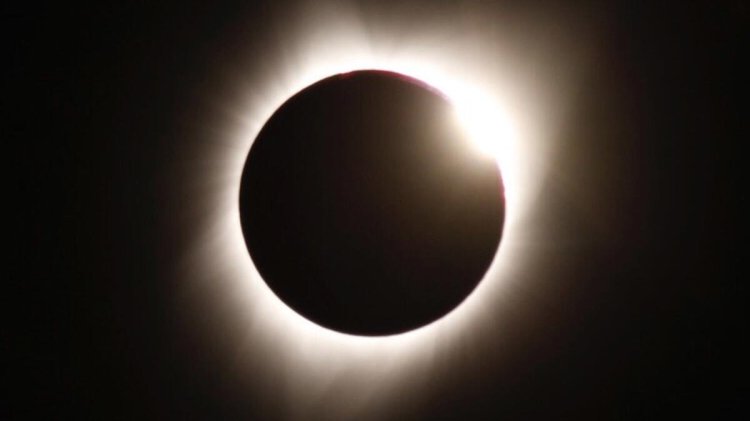Eclipse Wows North America

Eclipse mania gripped North America as a breathtaking celestial spectacle captivated tens of millions of people, offering a rare blend of scientific interest, commercial opportunity and daytime partying.
The Moon's shadow plunged the Pacific coast of Mexico into total darkness then swept across the United States at supersonic speed, returning to the ocean over Canada's Atlantic coast just under an hour-and-a-half after landfall.
Festivals, viewing parties and even mass weddings took place along the eclipse's "path of totality," where the Sun's corona glowed from behind the Moon in a display that left crowds awestruck.
The path of totality was 185 kilometers wide and home to nearly 32 million Americans, with an additional 150 million living less than 200 miles from the strip, according to NASA, which ran a live webcast throughout.
The eclipse was also a windfall for scientists. NASA launched a trio of sounding rockets before, during and just after the eclipse to measure changes caused by the sudden darkness to the ionosphere, an upper layer of the atmosphere important for long-distance radio communication.
It also offered a golden opportunity to study the Sun's corona, the outer layer of its atmosphere which is normally hidden by the blinding light of the surface, but has an outsized impact on everything from satellites to power grids.
As the eclipse unfolded, the rugged lunar topography revealed itself in a stunning "diamond ring" effect, while the planets Venus and Jupiter briefly appeared in the sky.
Startling animal behavior has been noted during past eclipses, such as roosters crowing as they believe it is dawn when the darkness ends.
In humans, eclipses trigger feelings of wonder as we confront our tiny place within the cosmic order. Individuals also exhibit more "prosocial" feelings towards each other in the aftermath of the shared experience.












